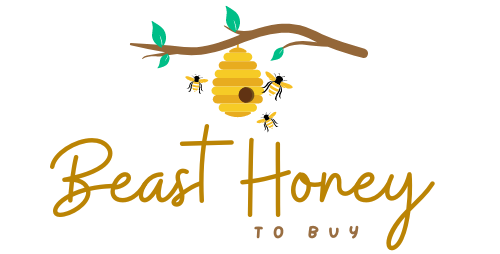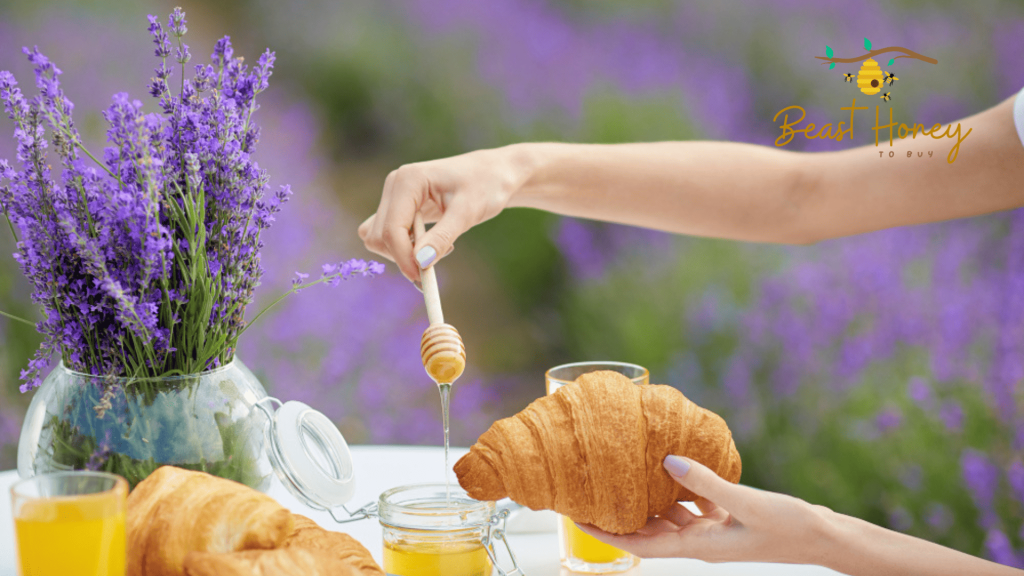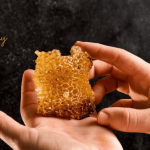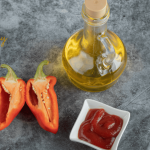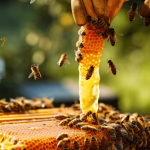Honey is a kitchen favorite. It’s sweet, natural, and versatile. But not all honey is the same. Lavender honey stands out with its unique flavor. It’s made by bees that collect nectar from lavender flowers. Regular honey, like clover or wildflower, is more common. So, what’s the difference? In this blog post, we’ll compare lavender honey and regular honey. We’ll look at their flavors, uses, and benefits. Let’s dive in and explore these sweet treats!

What Is Lavender Honey?
Lavender honey is special. Bees make it from the nectar of lavender flowers. These flowers grow in sunny places like France, Spain, or California. The honey has a light, floral taste. It’s often pale amber or golden. Lavender honey is prized for its aroma and delicate flavor. It’s a bit fancier than regular honey, but so worth it!
What Is Regular Honey?
Regular honey is what you find most often. It’s made from nectar of various flowers, like clover, wildflowers, or alfalfa. The flavor depends on the flowers the bees visit. Clover honey is mild and sweet. Wildflower honey is bolder and earthy. Regular honey is usually darker and thicker than lavender honey. It’s affordable and easy to find.
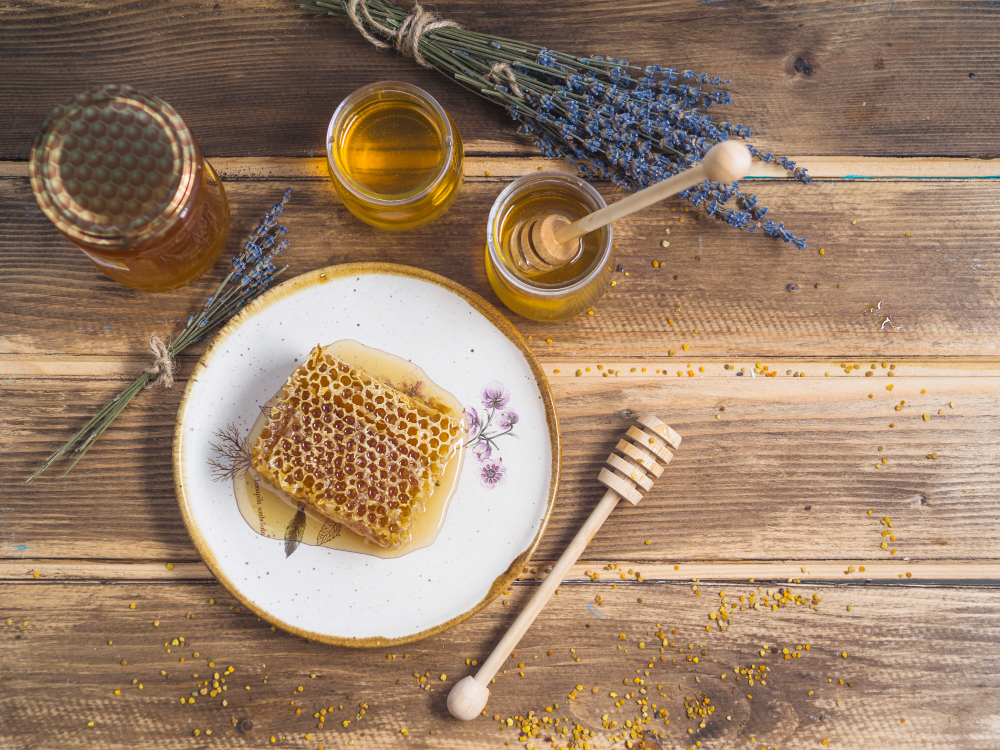
Flavor Comparison: Lavender Honey vs. Regular Honey
Flavor is where these honeys really differ. Let’s break it down.
Lavender Honey Flavor
Lavender honey tastes light and floral. It has a gentle sweetness. You can taste hints of lavender, like a walk through a flower garden. It’s smooth with a slightly herby or citrusy note. The aroma is amazing—flowery and calming. It’s not too strong, just elegant.
- Example: I spread lavender honey on toast. It felt like eating a sunny day in Provence!
Regular Honey Flavor
Regular honey varies a lot. Clover honey is soft and sugary. Wildflower honey is richer, sometimes with nutty or spicy notes. Buckwheat honey is dark and bold, almost like molasses. Regular honey is usually sweeter than lavender honey. It’s less floral but more versatile.
- Example: I used wildflower honey in my tea. It added a deep, cozy sweetness.
Which Tastes Better?
It depends on you! If you love light, floral flavors, go for lavender honey. If you want something classic or bold, regular honey is great. Try both to find your favorite.
Health Benefits: Any Differences?
Both honeys are healthy. They have similar nutrients. Here’s a quick look.
Lavender Honey Benefits
Lavender honey has antioxidants and enzymes. These help your body fight stress and germs. It’s known for calming effects, thanks to lavender’s relaxing scent. Some use it to ease anxiety or help sleep. It also soothes sore throats and boosts immunity.
- Fun Fact: In France, lavender honey is used in spa treatments for relaxation.
Regular Honey Benefits
Regular honey is also packed with antioxidants. It fights bacteria and inflammation. It’s great for coughs, wounds, and energy boosts. Some say local regular honey helps with allergies. The benefits depend on the flower source, but all raw honeys are nutritious.
- Tip: Raw, unfiltered honey has more health perks than processed.
The Verdict
Health-wise, they’re similar. Lavender honey might have a slight edge for relaxation. But both are great if you choose raw, unfiltered types.
Uses in the Kitchen: Lavender Honey vs. Regular Honey
Both honeys shine in cooking and baking. Their flavors make them suited for different dishes.
Lavender Honey Uses
Lavender honey is perfect for delicate recipes. Its floral taste adds a gourmet touch. Here are some ideas:
- Drizzle on Desserts: Add to yogurt, ice cream, or fruit salads.
- Pair with Cheese: Spread on a cheese board with brie or goat cheese.
- Flavor Drinks: Stir into chamomile tea or lemonade for a floral twist.
- Bake Delicately: Use in shortbread cookies or lavender scones.
- Example: I made lavender honey glaze for roasted peaches. It was sweet and flowery—everyone loved it!
Regular Honey Uses
Regular honey is a kitchen all-star. It works in almost anything. Try these:
- Sweeten Breakfast: Mix into oatmeal, pancakes, or smoothies.
- Cook Savory Dishes: Use in marinades for chicken or ribs.
- Bake Anything: Add to cakes, muffins, or bread for sweetness.
- Make Drinks: Stir into coffee, tea, or cocktails.
- Example: I used clover honey in a BBQ sauce. It gave a perfect sweet-tangy balance.
Which Is More Versatile?
Regular honey wins for versatility. It fits sweet and savory dishes. Lavender honey is best for light, elegant recipes. Keep both in your pantry for variety!
Recipe Idea: Lavender Honey Lemonade
Try this refreshing drink with lavender honey
- Mix 1 tablespoon lavender honey with 1 cup cold water.
- Add 2 tablespoons fresh lemon juice.
- Stir well and add ice.
- Garnish with a lemon slice.
This drink is light, floral, and perfect for summer. Regular honey works too, but it’s less fancy.
Price and Availability
Lavender Honey
Lavender honey is pricier. It’s made in specific regions, like Provence or California. A small jar (8 oz) costs $15-$25. You’ll find it at health food stores, online, or specialty shops. It’s less common than regular honey.
- Where to Buy: Thrive Market, Amazon, or local gourmet stores.
Regular Honey
Regular honey is cheaper and easier to find. A jar (16 oz) costs $5-$15, depending on type. You can get it at grocery stores, farmers markets, or online. Local beekeepers often sell it too.
- Where to Buy: Walmart, farmers markets, or beekeeper websites.
Which Is Worth It?
If you want a treat, splurge on lavender honey. For everyday use, regular honey is budget-friendly.
How to Spot Real Honey
Both types can be faked. Here’s how to ensure you get real honey:
- Check Labels: Look for “raw,” “unfiltered,” or “100% pure.”
- Test Texture: Real honey is thick and cloudy. Fake honey is clear and runny.
- Taste It: Lavender honey should taste floral. Regular honey should match its type (like clover or wildflower).
- Buy Trusted Brands: Stick to reputable sellers or local beekeepers.
- Avoid Cheap Deals: If it’s too cheap, it might be mixed with syrup.
Storage Tips for Both Honeys
Keep your honey fresh with these tips:
- Store Cool: Put it in a cool, dry place. Avoid heat or sunlight.
- Seal Tight: Use an airtight jar to prevent moisture.
- Don’t Refrigerate: Cold makes honey crystallize faster.
- Check Smell: If it smells fermented, toss it.
Both honeys last years if stored right. Crystallization is normal—just warm gently to liquify.
Safety Notes
Honey is safe for most people. But remember
- No Babies: Don’t give honey to kids under one. It can cause botulism.
- Allergies: Test a small amount first. Watch for rash or swelling.
- Moderation: Honey is sugary. Use 1-2 teaspoons daily to avoid extra calories.
Which Should You Choose?
It depends on your needs:
- Pick Lavender Honey If: You love floral flavors, want a calming treat, or need a fancy ingredient.
- Pick Regular Honey If: You want a versatile, affordable option for daily use.
- Try Both: Keep lavender honey for special dishes and regular honey for everything else.
Where to Find Them
- Farmers Markets: Great for local regular honey. Some sell lavender honey too.
- Health Food Stores: Whole Foods or Sprouts carry both types.
- Online: Amazon, Thrive Market, or beekeeper sites like BeeRaw.com.
- Local Beekeepers: Search “raw honey near me” for fresh options.
Final Thoughts
Lavender honey and regular honey are both amazing. Lavender honey brings a light, floral vibe. It’s perfect for desserts, teas, or cheese boards. Regular honey is bold and works in everything, from BBQ to baking. Both have health benefits if you choose raw, unfiltered types. Try them to see which you love more. Store them right and check for quality. Got a favorite honey recipe? Share it in the comments! Let’s keep the honey love buzzing!
For more information, visit , https://besthoneytobuy.com/
